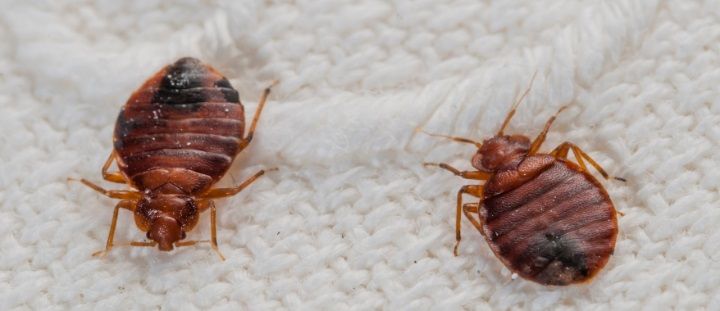Bed bugs can cause immense discomfort and frustration when they invade your home. Knowing how to address this problem quickly and effectively is key to maintaining a clean and safe living space. This article will guide you through the best bed bug treatments, provide actionable advice, and explain how to keep your home free from pests.
What Are Bed Bugs?
Bed bugs are small, brownish insects that feed on the blood of humans and animals. They tend to hide in cracks and crevices during the day, coming out at night to feed. Their bites can cause itching, irritation, and even allergic reactions in some individuals. Spotting the early signs of bed bugs is critical for timely intervention.
Signs of a Bed Bug Infestation
Recognizing the early signs of a bed bug infestation can help you take quick action before it spreads. Here are some common indicators:
- Red, itchy welts: Bed bug bites often result in red bumps on the skin, especially around areas exposed while sleeping.
- Blood stains: After feeding, bed bugs may leave small bloodstains on your bedding.
- Musty odor: A persistent, musty smell is sometimes an indication of a heavy infestation.
- Dark spots: These are bed bug feces, often found near the seams of mattresses or furniture.
Effective Bed Bug Treatment Methods
1. Heat Treatment
Bed bugs cannot withstand extreme heat, making heat treatment one of the most effective solutions. Professional pest control services often use heat chambers or steamers to eliminate bed bugs. However, you can also use your dryer to heat-treat smaller items such as clothes or bedding.
How to Use Heat Treatment:
- Wash and dry all clothes, bed linens, and curtains at high temperatures.
- Use a steamer to treat mattresses, carpets, and furniture.
- Keep infested items exposed to temperatures above 118°F for at least 90 minutes.
2. Vacuuming
Vacuuming is an effective way to remove bed bugs and their eggs from mattresses, carpets, and furniture. Although vacuuming alone will not solve the infestation, it can significantly reduce the number of bugs.
Vacuuming Tips:
- Use a vacuum cleaner with strong suction power.
- Focus on seams, cracks, and crevices where bed bugs tend to hide.
- After vacuuming, seal and dispose of the vacuum bag in a trash bin outside your home.
3. Mattress Encasements
Encasing your mattress and box spring in bed-bug-proof covers can help trap any remaining bugs and prevent them from spreading. These encasements create a barrier between you and the bed bugs while keeping them from hiding in the mattress.
4. Diatomaceous Earth
Diatomaceous earth is a natural, chemical-free solution to bed bugs. It works by dehydrating the insects, causing them to die over time. This powder can be spread around bed frames, baseboards, and other areas where bed bugs are commonly found.
How to Use Diatomaceous Earth:
- Lightly dust the areas where bed bugs are hiding.
- Leave it for several days before vacuuming.
- Reapply if necessary until the infestation is fully under control.
5. Chemical Treatment
Insecticides can be effective in treating bed bugs, especially in hard-to-reach areas. However, it’s important to use bed bug-specific products to avoid exposure to harmful chemicals. Always follow the manufacturer’s instructions and consider professional help if needed.
Common Insecticides for Bed Bugs:
- Pyrethroids
- Neonicotinoids
- Desiccants
Preventing Future Bed Bug Infestations
After bed bugs treatment you’ve successfully, taken steps to prevent a future infestation is crucial.
1. Regular Inspections
Check your bedding, furniture, and carpets regularly for any signs of bed bugs. If you’ve stayed in hotels or traveled recently, inspect your luggage and clothing upon returning home.
2. Declutter Your Home
Bed bugs thrive in cluttered environments because they provide them with more hiding spots. Keeping your home tidy and clutter-free will make it harder for bed bugs to settle.
3. Seal Cracks and Crevices
Sealing cracks in walls, baseboards, and furniture will help eliminate potential hiding spots for bed bugs. This also prevents new infestations from spreading quickly.
4. Be Cautious with Second-Hand Furniture
While buying second-hand furniture may be budget-friendly, it can sometimes harbor bed bugs. Inspect any used furniture thoroughly before bringing it into your home.
Frequently Asked Questions (FAQs)
1. How long does it take to get rid of bed bugs?
The time it takes to eliminate bed bugs depends on the severity of the infestation and the treatment method used. In general, it can take anywhere from a few days to several weeks to completely eradicate them.
2. Can I treat a bed bug infestation on my own?
Yes, you can treat a mild infestation on your own using DIY methods like vacuuming, diatomaceous earth, and heat treatment. However, if the infestation is severe, it is advisable to hire a professional pest control service.
3. Are bed bug bites dangerous?
Bed bug bites are not dangerous but can cause discomfort, itching, and in rare cases, allergic reactions. If the bites become infected or cause an allergic response, seek medical attention.
4. How do I know if the bed bugs are gone?
After treatment, continue to monitor for any signs of bed bugs such as bites, blood stains, or dark spots. It’s a good idea to inspect your home periodically and use bed bug traps for a few weeks to ensure they’re gone.
5. Do bed bugs only live in beds?
No, bed bugs can live in various places around your home, including furniture, carpets, curtains, and even electrical outlets. While they prefer to stay close to their food source (humans), they can spread throughout the home if left unchecked.
Final Thoughts
Bed bugs are a nuisance, but with the right bed bug treatment and preventive measures, you can quickly regain control of your home. From heat treatment to insecticides and natural solutions like diatomaceous earth, there are plenty of options to choose from. Regular inspections, cleanliness, and cautious behavior will help you maintain a pest-free home.







